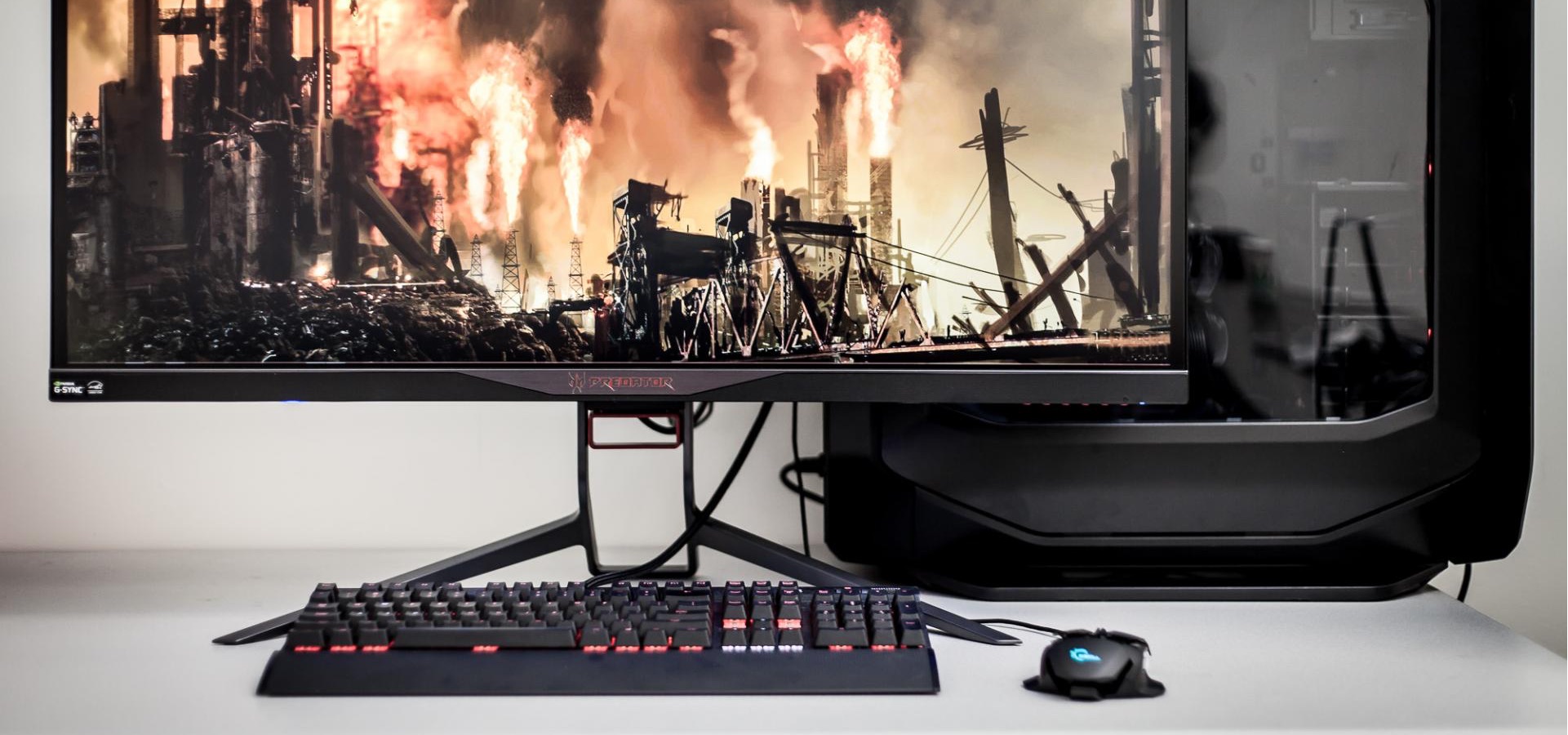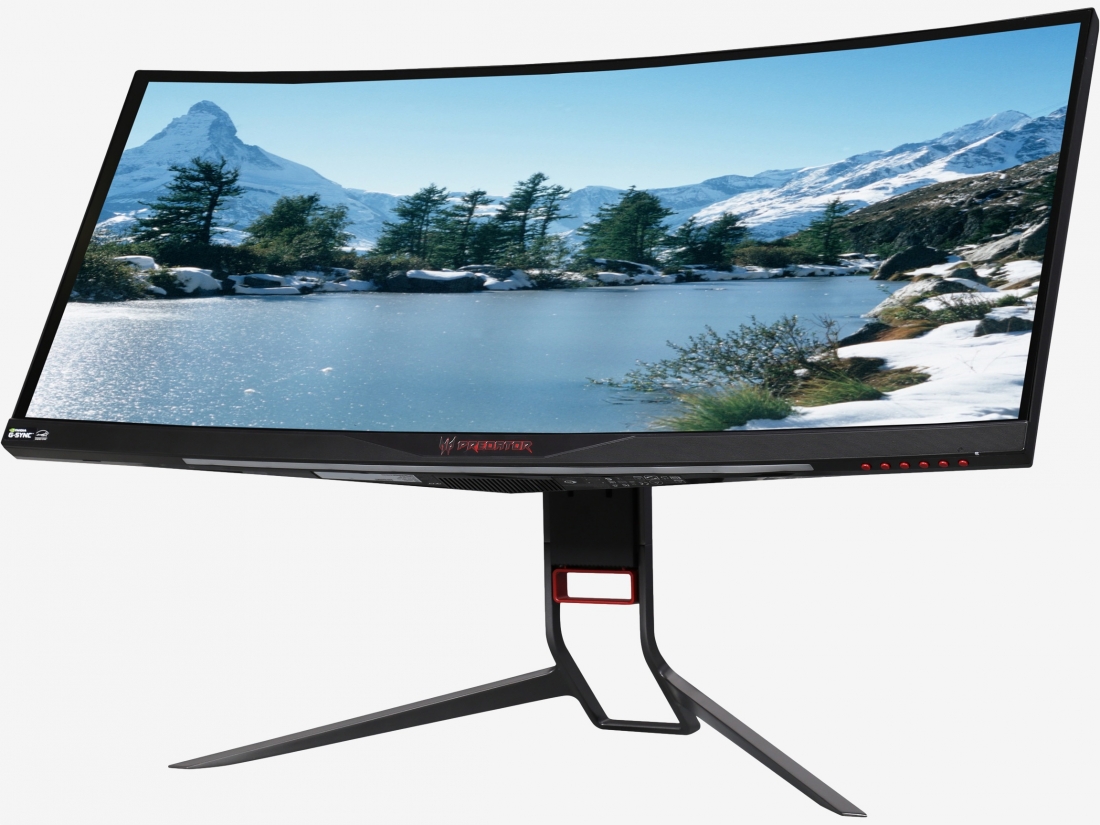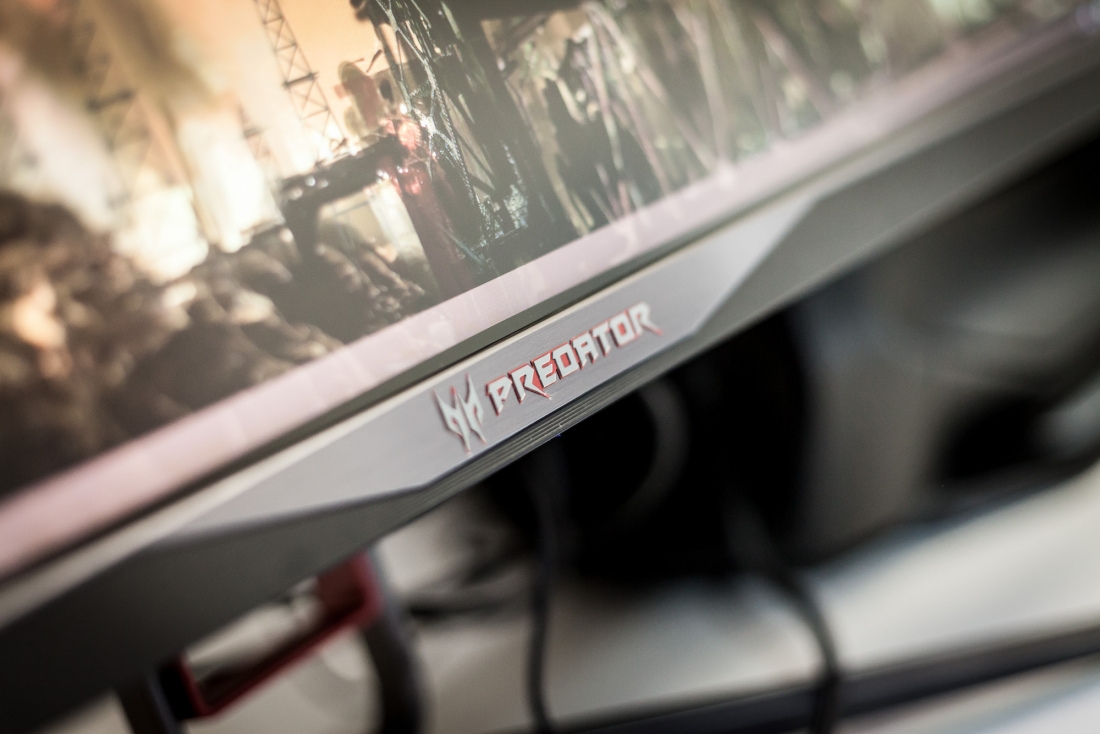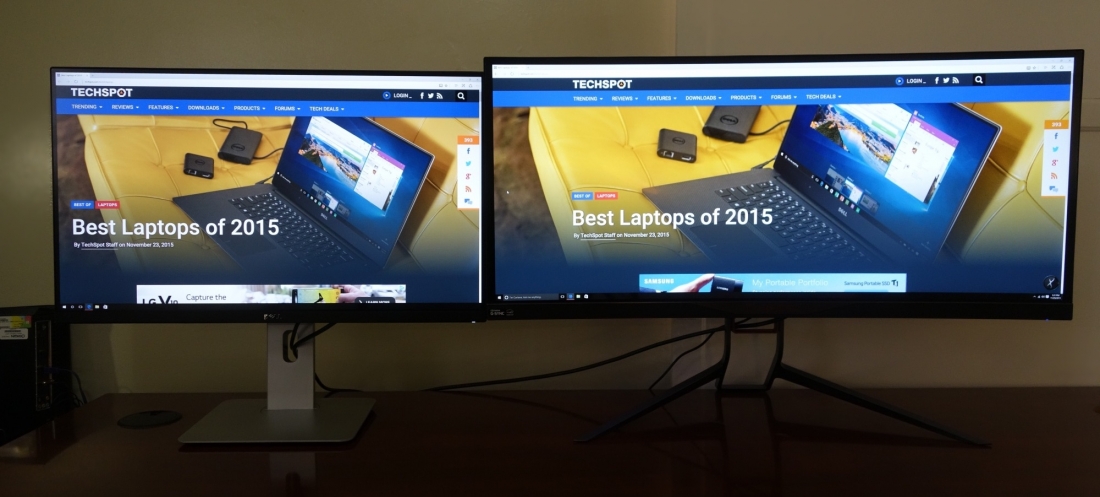Since the first ultrawide display graced our desks in 2013, manufacturers have continued to refine format by introducing new models and features. After releasing the world's first 21:9 consumer display in 2012, LG continued to up the ante by launching both the first curved and first FreeSync ultrawides.
Other manufacturers have since released a full spectrum of displays, some curved, some 34 inches, some compatible with FreeSync. Curiously though, G-Sync was nowhere to be found. Eyeing an opportunity, Acer's now the company with something no one else has: a curved 34 inch ultrawide rocking G-Sync.
Acer's Predator X34 has a curved UQHD (3440 x 1440) AH-IPS panel and garners reasonable gaming cred with a 100Hz vertical refresh rate, G-Sync and an interesting design. Should GeForce owners be drooling or is this one a hard pass?
Design, Accessories and Adjustments
Acer Predator X34 w/G-Sync
Price: $1,290
- Resolution: 3440 x 1440 (UQHD)
- Panel type: Curved AH-IPS, light anti-glare
- Color: 100% sRGB (72% NTSC), 10-bit color (8-bit + FRC dithering) support
- Max Refresh Rate: 60Hz to 100Hz (overclocked)
- G-Sync: Yes
- FreeSync: No
- Adaptive-Sync: No
- Inputs: 1 x DisplayPort 1.2, 1 x HDMI 1.4, 4 x USB 3.0
- Outputs: 1 x DisplayPort, 1 x USB 3.0
- Physical Dimensions: 32.5" x 18"-23" x 12.2" (with stand)
- Weight: 22lbs (with stand)
- Audio: 2 x 7 watt speakers with DTS
An imposing display, Acer's Predator X34 is at least three things visually: enormous, really wide and curved. The curvature is subtle; it doesn't feel like the Predator isn't trying to give you a hug, but it's quite noticeable. In the box are all the essentials you'll need to get started including standard DisplayPort, HDMI and USB 3.0 cables. Additionally, there's a 100x100 VESA mounting plate for your wall or stand mounting pleasure.
The Predator's physical design embodies its namesake with plenty of points and edges giving it an almost "dangerous" if slightly avant-garde appearance. The stand accounts for a good part of this styling and is remarkably sturdy notwithstanding its thin design. Acer also provides Predator X34 owners with some basic but essential physical adjustments: vertical height and backward/forward tilt. The amount of available adjustability should satisfy most home and work spaces. Backward tilt is a generous 45 degrees although forward tilting is a platitudinal 5 degrees. As measured, height is adjustable anywhere from about 1 to 6.5 inches from the base.
One minor complaint: the stand is unusually deep. Even when pushed against a wall, the display itself is a good 7 inches or so closer to to the user than the rear of the stand. Also, care must be taken to not push this stand too far off your desk – at the rear "foot" is a thin bar and not a broad surface and must be necessarily 100% on your desk. Push it too far and you'll be in for an expensive surprise!
Connectivity, OSD
Interface diversity is lacking (particularly at this price point) but you're basic needs are likely met with single 1.2a DisplayPort and single HDMI 1.4 input. Interestingly, an updated G-sync V II module actually allows for HDMI 1.4 which generally wasn't available on older G-Sync displays.
There's also a DP daisy chaining port for connecting a secondary display direct (just imagine two of these). The integrated 4-port USB 3.0 hub is certainly a nice touch. It's worth noting all of the interfaces are located on the bottom rear of the monitor, so they can be a bit cumbersome to access for connecting frequently accessed items, like say, a flash drive. A modestly-sized DC power brick brings it all alive.
Acer has opted for actual, physical buttons instead of the capacitive touch variety oft-seen on higher end displays. They are tucked out of sight underneath the bottom right corner. Placement of these physical buttons means owners must navigate the Predator's already clumsy onscreen settings (OSD) menus entirely by feel.
The OSD is a nightmare to control despite its robust set of options (e.g. overdrive, power settings, presets, ambient light sensor) Granted, these settings and menus are something you shouldn't interact with too often but I do expect a more refined experience for $1299. There are quite a few options tucked away in the OSD settings, including "overclock" which raises the refresh rate from 60 to 100Hz. "Overclocking", by the way, won't void the industry-generous 3 year warranty.
Productivity and Dual Display
Even at 3440 x 1440, Acer's 34 inch behemoth falls short of offering the same breadth of pixels as most dual 1080p monitor configs. However, there's definitely enough screen area to multitask effectively and all the while not feel constrained. Making use of Windows 10's screen snapping and gaming in windowed borderless mode are just a couple tricks to help manage the experience.
Dual or even triple displays still offer some advantages, like full-screen gaming with a browser window open, but the gap is definitely narrowing. With that said, Acer's new display is the first ultrawide I've encountered which could comfortably replace most dual display configurations. Admittedly, smaller 21:9 displays at lower resolutions (e.g. WQHD) feel cramped. So, if you are looking to truly replace your dual-head config, a 34 inch UQHD display is a good place to start.
For purposes of work and web browsing, I didn't find the Predator's gentle curvature useful. In fact, I even found it subtly disconcerting. The effect wasn't extremely unpleasant or annoying, but I remained astutely aware of this warping, curving effect. Long horizontal elements like lines and bars always reminded me of the inescapable truth that I'm working on a curved screen.
Image Quality
Equipped with an AH-IPS display, the Predator X34 provides excellent viewing angles, a must for such an oversized screen. The display features a "frameless" design indicating the absence of a physical frame surrounding the viewport. Notably, there's still a black border as with most other frameless designs. The panel is treated with a light anti-glare coating granting it a somewhat matte appearance. This less aggressive treatment strikes a good balance by eliminating mirror-like reflections without becoming too "grainy".
Subjectively, the Predator X34 pairs good brightness with vivid colors. I should add that, out of the box, the color settings were significantly too warm and were in desperate need of calibration. Presets were also pretty off-balance. After making adjustments, colors seemed true enough for a pleasurable experience under most circumstances. As a subjective basis for comparison, some side-by-side image comparisons were done against a professionally calibrated Dell UltraSharp U2713HM. Please note that a slightly newer model (U2715H) is shown for demonstration purposes below.
The U2713HM is a semi-professional display featuring a 16:9 standard-gamut panel and 8-bit color. Despite the Predator X34's advertised 10-bit color, perceived accuracy and gamut fared slightly worse than the Ultrasharp. Creative professionals considering going ultrawide but view color accuracy as a critical feature should pass on the Predator X34. For most other uses though, I expect owners to be very satisified.
In terms of lighting and brightness, our review unit showed a significant amount of backlight bleed. This was especially true in the upper left corner. This is a common issue found on many displays (less so at the premium high end) and becomes most visible while viewing dark content like games and movies. This was disappointing to see at this price, but bleed is something that can vary from unit to unit.
More positively, the sometimes annoying phenomenon of IPS glow was pleasantly minimal. IPS glow was actually surprisingly good, especially in light of the Predator X34's enormous panel. Despite the backlight bleed issue, overall contrast was good with bright brights and dark blacks.
Commonly accepted IPS shortcomings from years past, namely input lag and ghosting, aren't issues for the Predator X34. Generally speaking, IPS panels have improved over the years and the industry is at a point where IPS performs well enough to satisfy nearly everyone, including avid gamers.
When compared against a TN panel in gaming mode (near-zero input lag) at testufo.com, the Predator X34 fared extremely well in various informal tests. Most importantly though, ghosting and input lag were imperceptible while gaming. The 100Hz refresh rate, although not 120Hz or 144Hz, is also solid. The reason for a curious number like 100Hz is likely DisplayPort 1.2 bandwidth constraints. When DisplayPort 1.3 arrives, we should finally see UQHD panels at higher refresh rates. Until then, the Predator X34 (spec wise) will likely be on par with the best UQHD displays for gaming.
Masthead image and some other images courtesy of Newegg.











